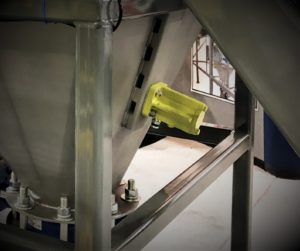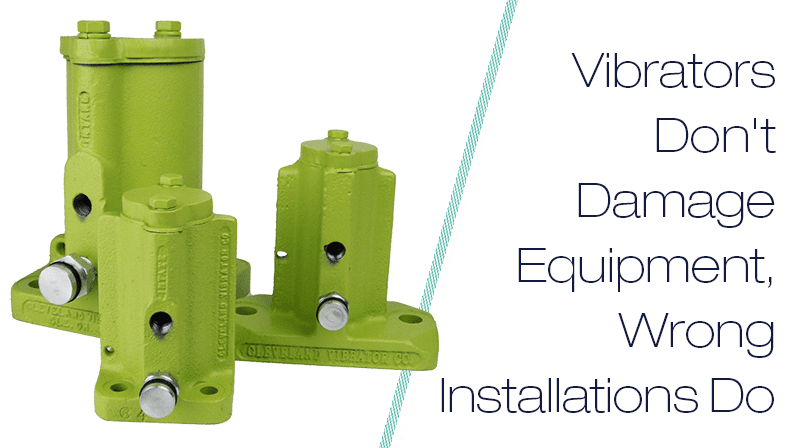
Recently, I took a whirlwind trip through the heartland. During this trip, I had the opportunity to visit plants and equipment makers installing and using vibrators. While in the field, I encountered damaged equipment, including cracked hopper walls that had to be re-welded.
Too often, the vibrator gets a bad rap in these situations. However, in reality, the damage is a function of incorrect sizing or installation of the vibrator. So to clear up any misconceptions, here are three easy recommendations to prevent future equipment damage:
1) Call a professional for sizing help.
We have many resources available to help you select and size your vibrator. However, picking an appropriately sized vibrator for material load sizes and bin or hopper wall thickness can be complicated. We recommend reaching out to our vibration experts so we can ensure you make the right choice for your application. Here are a few common questions we get that can change your vibrator selection:
- What should I choose if my hopper is a large dimension, but I only want to vibrate when it is almost empty for cleanout?
- How should I choose the best option if my bin wall isn’t thick enough to handle the vibrator appropriate for my material load?
- What if I have bolted, instead of welded, construction?
We know that people want to Google search, find an answer, and run with it. However, a five- or ten-minute call once you have gathered your first info can pay big dividends. We are here to help!
Check out the video below to learn more about vibrator installation:
2) Read the installation manual.
It will tell you how to attach important elements such as stiffener plates, mounting channels, and bolts. Believe it or not, even something as simple as nuts and bolts has a significant effect on the performance and integrity of the vibrator.
3) If you don’t call us or read the manual, remember this essential rule for installation:
Stitch weld the mounting channel, and DO NOT weld the corners of the mounting channel to your bin or hopper wall.
This is the number one cause of cracking that I have seen. The corners need a little give for the vibration. If they are welded down, you WILL see cracks form in your bin or hopper wall extending directly out from those mounting channel corners. That doesn’t help anyone, except maybe the manufacturers of the bins and hoppers.
Certainly, more elements can help protect your equipment and ensure that your investment is effective. But, if you want the fast answer, please at least pay attention to these main points.
Have questions about proper industrial vibrator installation? Contact our vibration experts here.

Craig Macklin joined The Cleveland Vibrator Company in 2010. Although his prior experience is mired in the world of theoretical, intangible products and services such as software and consulting sales, the past 11 years have developed his passion for this industry and molded the vibration expert we know today. Now, as President and CEO, Craig has a deep understanding of the value and importance of industrial vibration to numerous industries and applications. He enjoys fine, locally roasted espresso, good food, and spending the day with his wife and two daughters. He has cried at multiple Browns and Indians games and likes to get outside and golf in his free time.
What’s his area of expertise, you ask? “Making sure the people on our team are better and smarter than I am.” – Craig Macklin
Share this blog post:
Follow us:


